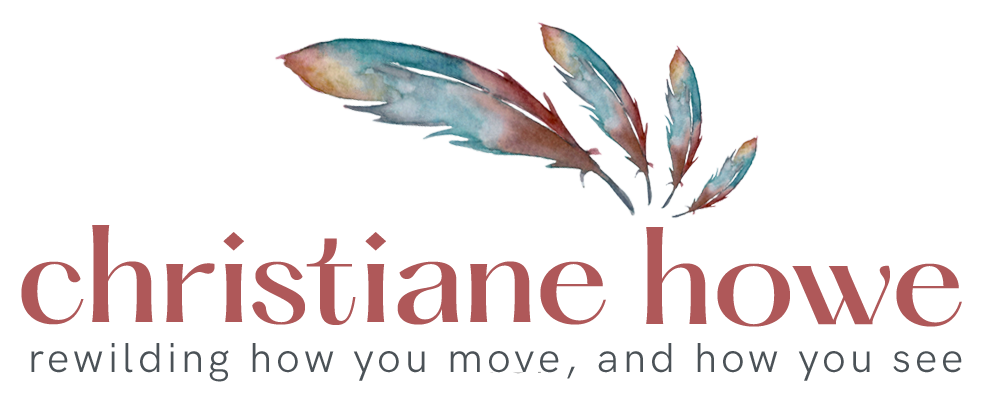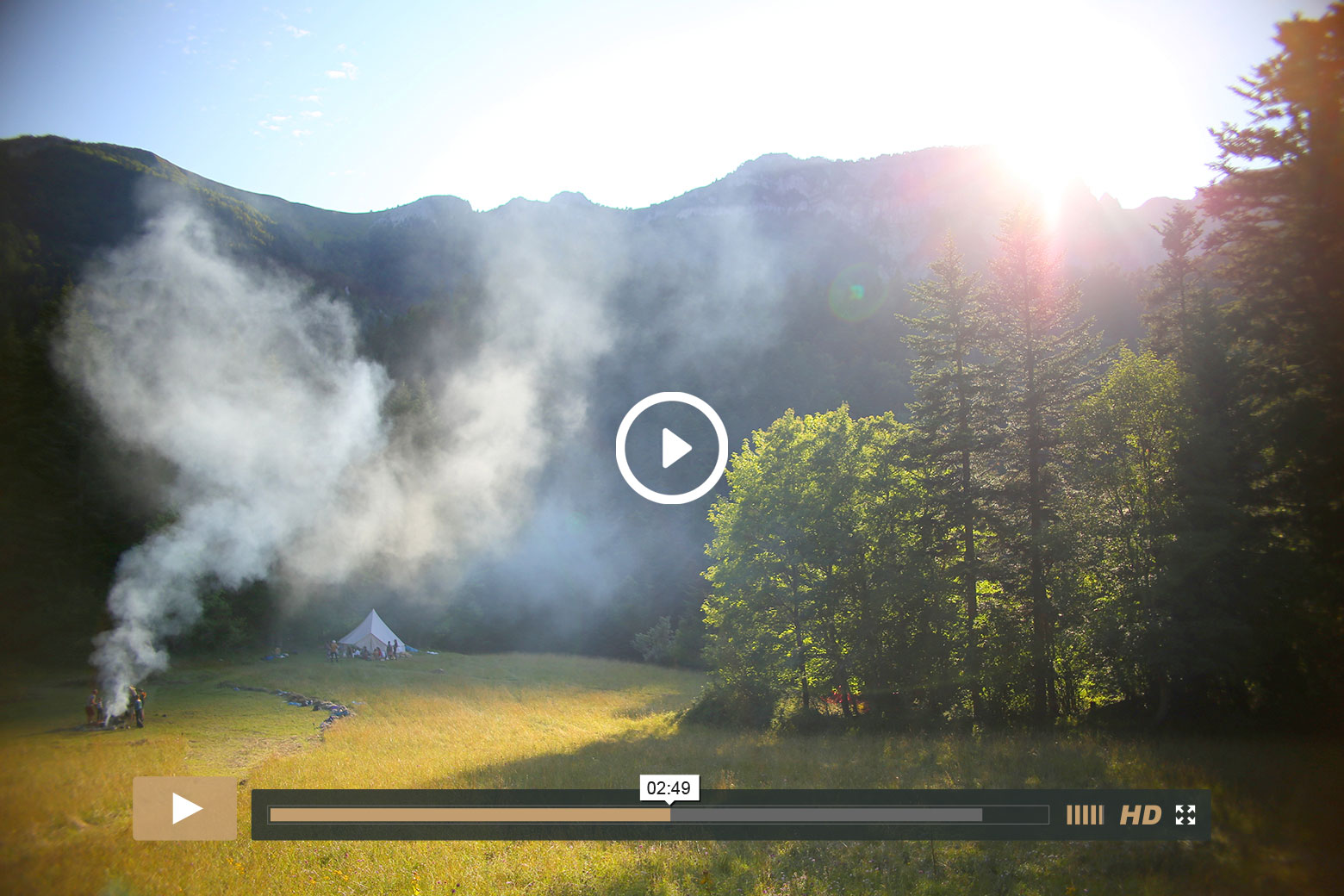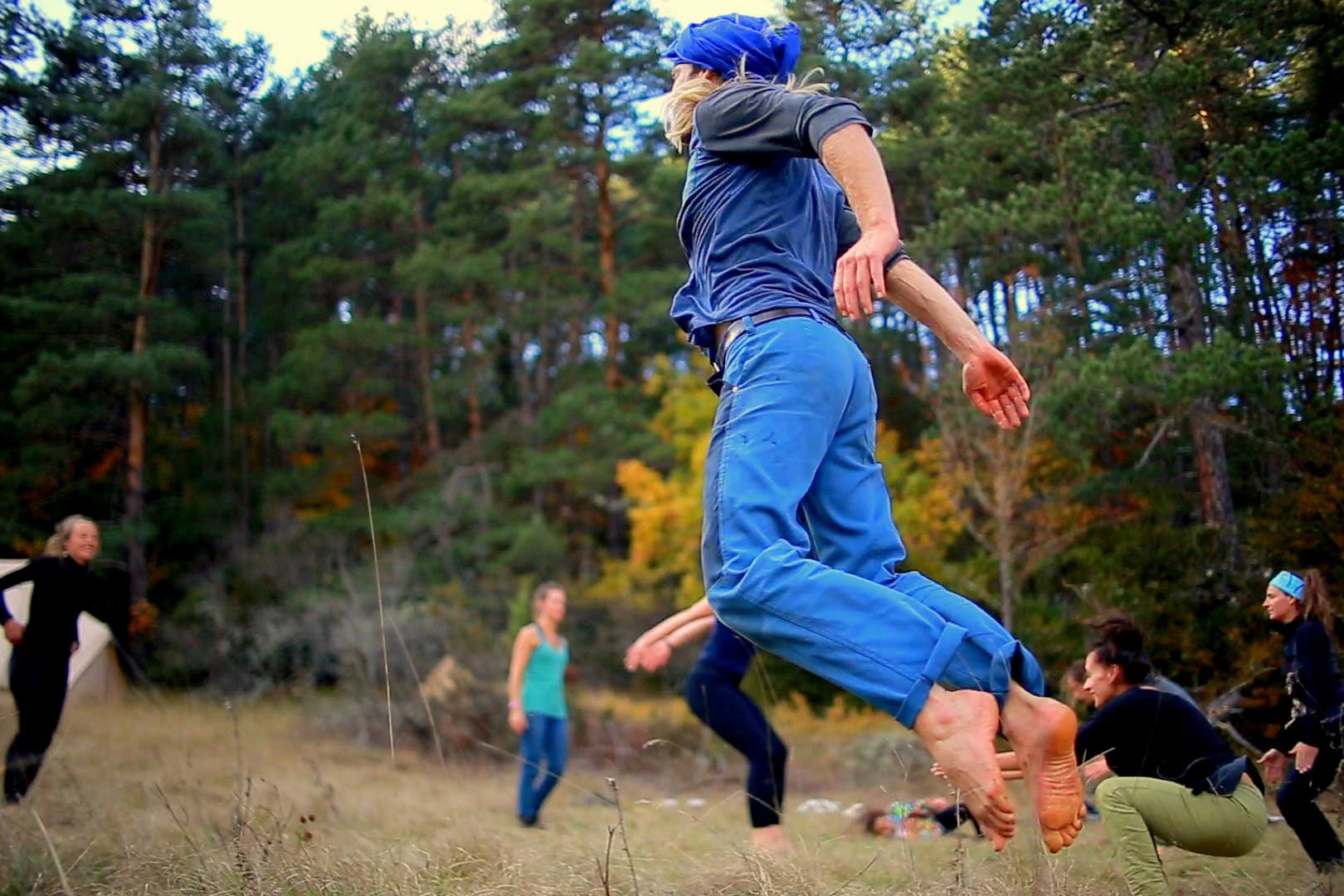At the stage where humanity is currently at, perhaps it is about time we have a shift in narrative. Perhaps it is time to tell a different story, or even to retell an old one that has been forgotten, put aside, and buried. A story that may just rekindle the belief in our own humanity and revive the deep knowledge of the role human-kind has to play on this earth, as well as the place of each individual.
Within my personal rewilding journey, I have been recreating that story from my own eyes, and have met others who share a common story. One that reignites a passion around nature-based practices connecting back to ancestral knowledge and skills whilst at the same time bringing together community, and healing the wounds we carry that have been created by a broken and disconnected systemic society. For me, rewilding is about engaging in a holistic approach to being human on this earth by finding ways to bring together and reconnect the individual, the community, and the land.
What human rewilding means to me
Whenever I talk about rewilding to people I have only just met, I am frequently asked “so, what does rewilding actually mean?”. I have often thought about the definition, as it is important to me that people understand what this beautiful worldview is about. However, it’s not the easiest thing to define, as within the realms of our definition of wild is the inherent nature of its untameable essence that is present but hard to capture. The wild and free part of me doesn’t want to try and define it, whereas my mercurian gemini mind loves trying to conceptualise and box it up into something bite size that can be easily shared and used to inspire others. So I like to try!
Firstly, it is important to acknowledge the definition of rewilding from a conservation perspective, which says that “Rewilding is about creating the conditions for nature to thrive, it’s about re-establishing the natural processes that repair ecosystems and boost biodiversity.” (rewildingbritain.org.uk/explore-rewilding/what-is-rewilding/examples-of-rewilding).
However, this view most often still separates the notion of humans and the wild.
So far, my favourite most concise way to define Rewilding is by using the definition of “feral” which is the process of returning to a wild state after having been domesticated (e.g. a feral cat). This definition is why I have named my movement practice Feral Movement. It simply puts together the idea that there is a process and direction from the “domesticated” back to the “wild”. This process acknowledges that there was once a wild state “pre” domestication, and that this wild state can also be returned to. I find that using the term feral for us modern humans is quite a fun way to bring in the concept of rewilding as it challenges the common belief that we are separate from animals with the bodies of mammals (which for many of us is a taboo), and therefore can help us to realise that we have also been domesticated and that domestication isn’t just reserved to “other” animals like our pets or farm animals.
On my rewilding journey, something very important at the beginning was gaining the real understanding of where my ancestors came from. My hunter-gatherer ancestors that is. Yuval Noah Harrari’s book “Sapiens” helped me with that, as well as listening to the podcast “ReWild Yourself” or “The Rewilding Podcast”, researching online, reading books, articles, etc. The understanding of my wild roots and their ancient history is something my education and its colonial heritage has most often brushed over, seeking to separate us from our more animalistic ancestors by focusing primarily on our recent domesticated “civilised” history. I will never forget when the penny really dropped for me as I grasped that over 96% of our history we lived on this planet as hunter-gatherers, and that it is only in the last 4% of our human history that we have disconnected to these roots due to the shift of the Agricultural Revolution about 10-15,000 years ago.
Rewilding in humans means to revert back to a natural or untamed state of being. It is the process of undoing unhealthy modern conditioning and recreating cultures and lifestyles beyond domestication as we define it today. It is the process of rekindling our connection to nature and unearthing a truer, wilder, more holistic way of life that centers nature and simple living.
The domesticated-rewilded Spectrum
And so one of my favourite ways of describing rewilding is by using a spectrum with at one end the extremely “domesticated” and at the other end the extremely “rewilded”. On an unconscious level, every single human being on this planet can be found somewhere on this spectrum. However, for those who have decided to embark on the process of rewilding, they can figure out roughly where they are on the spectrum, and make a conscious decision to go in that common direction. Rewilding becomes a choice, and so does domestication.
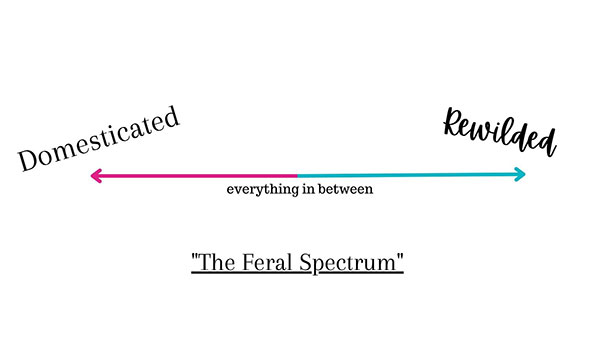
However, I acknowledge that this is quite a linear and dualistic perspective, and things are never just that simple! There are actually many layers to the spectrum.
Once one has become conscious of the spectrum and has decided to go in the general rewilding direction, they can then decide, on a very personal and subjective level :
- What would I like to “keep” from the realms of the domesticated world of the modern human? What I am not ready to let go of?
- What of the “domesticated” am I ready to let go of and strip away from my life? What do I wish to strip away that does not serve the health of the earth?
- What skills, knowledge, and ways of being would I like to rekindle or learn in order to rewild?
I believe that it is the intention to go in the rewilding direction (as opposed to going closer to the domesticated) that unites people in the rewilding community and movement. However, the choices made are very personal and subjective, which means that it is important to not judge anyone on this path. There is no right or wrong! Each individual is on their own journey and is faced with their own challenges. Not to mention that in one’s own lifetime it is possible to go back and forth on the spectrum depending on particular circumstances.
My own rewilding perspective
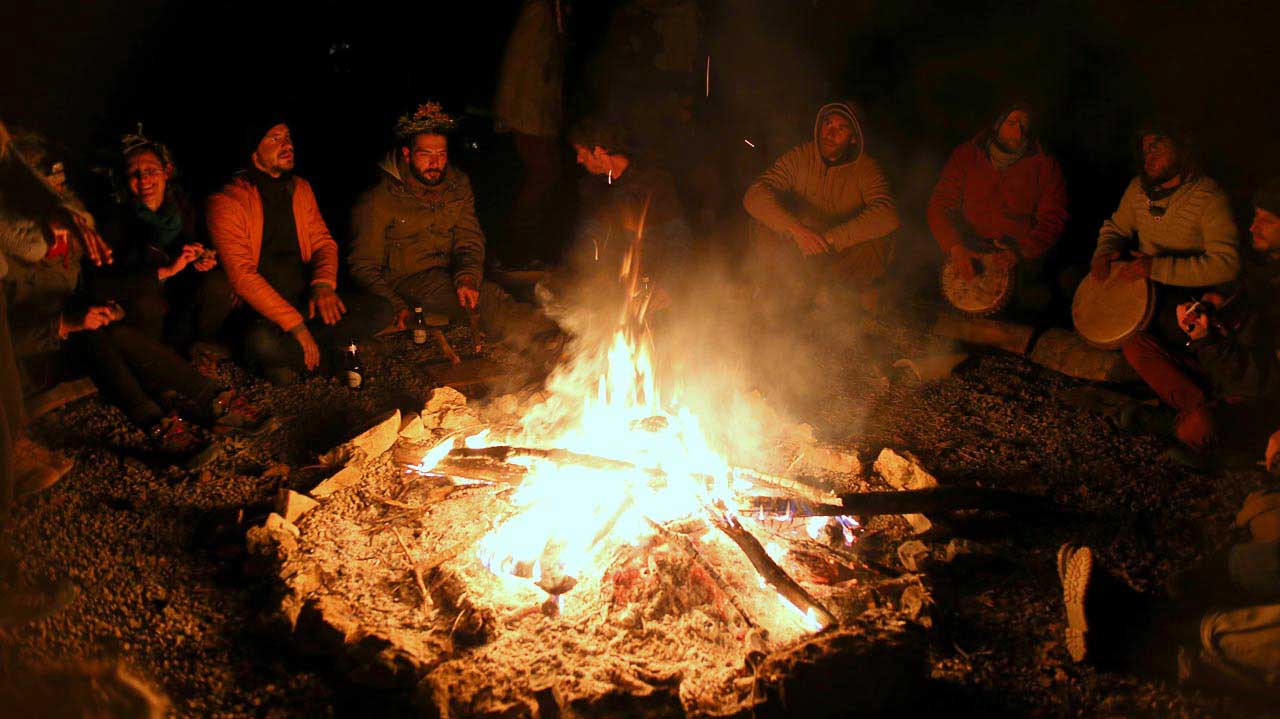
Photo: Creating a Solstice ceremony with my local rewilding tribe in France, ©Christiane Howe.
As for myself, on the one hand I have chosen to keep using the technology that enables me to connect and communicate with the larger world (e.g. my pc, camera, and phone). Although this isn’t always in favour of my own rewilding as it can disconnect me from the natural world as well as my local community, and when used too much can create a feeling of imbalance, I have made this choice based on my deep feeling that my life’s vocation is to understand what is at the core of today’s rewilding as well as show the wider world what it is all about. This means taking photos of people in this community, as well as making videos to support people on a similar path, and using social media to connect to people rewilding all over and anyone who may feel inspired by it.
On the other hand I try and balance this out by keeping my body stretched and strong (e.g. having a morning practice, using Feral Movement, etc.), having a spiritual practice, living in community as well as finding ways to engage with my local rewilding community, connecting with the land, and practising techniques such as weaving or cordage from different fibres, and much more! If you are interested in finding out more about the different ways I choose to rewild, please check out this article from my blog!
Although I acknowledge there is so much more I could do to rewild myself, by doing anything at all I am investing meaning in the rewilding story, claiming my own journey, leading by example, and giving others the permission to do so too.
So, how do you see rewilding or define it yourself? Do you see yourself on the rewilding spectrum? What’s your own rewilding story? I’d love to hear about it!
